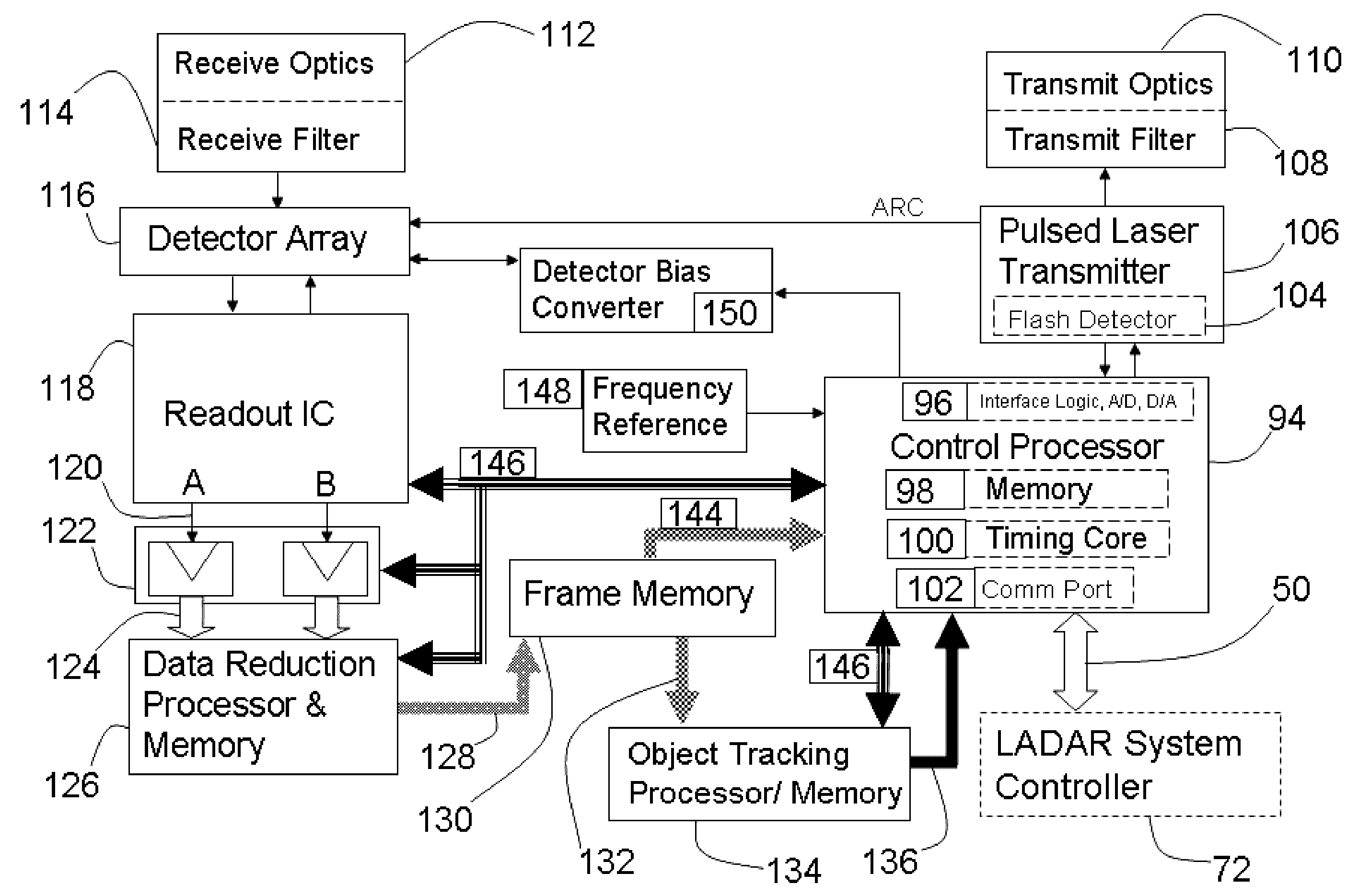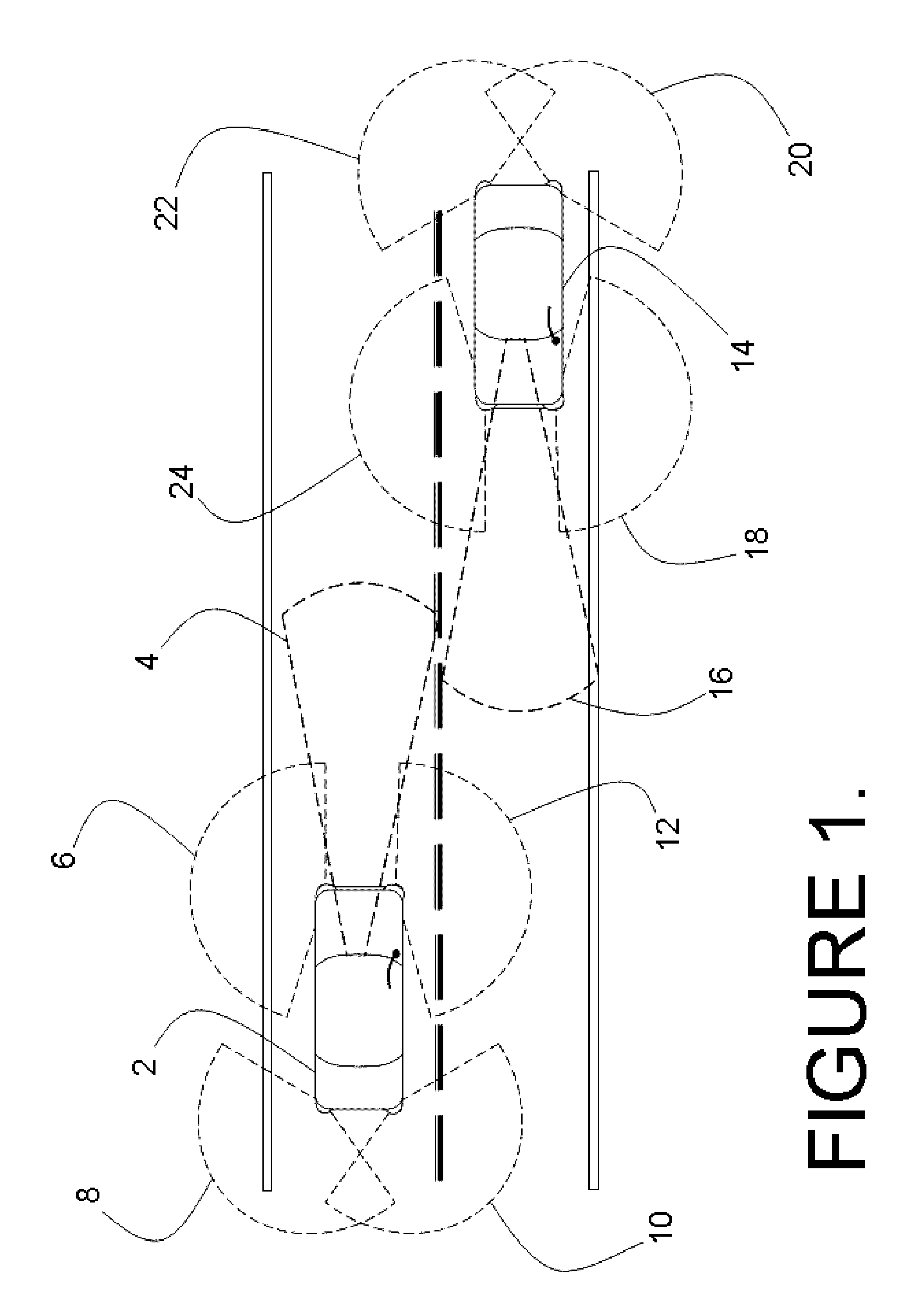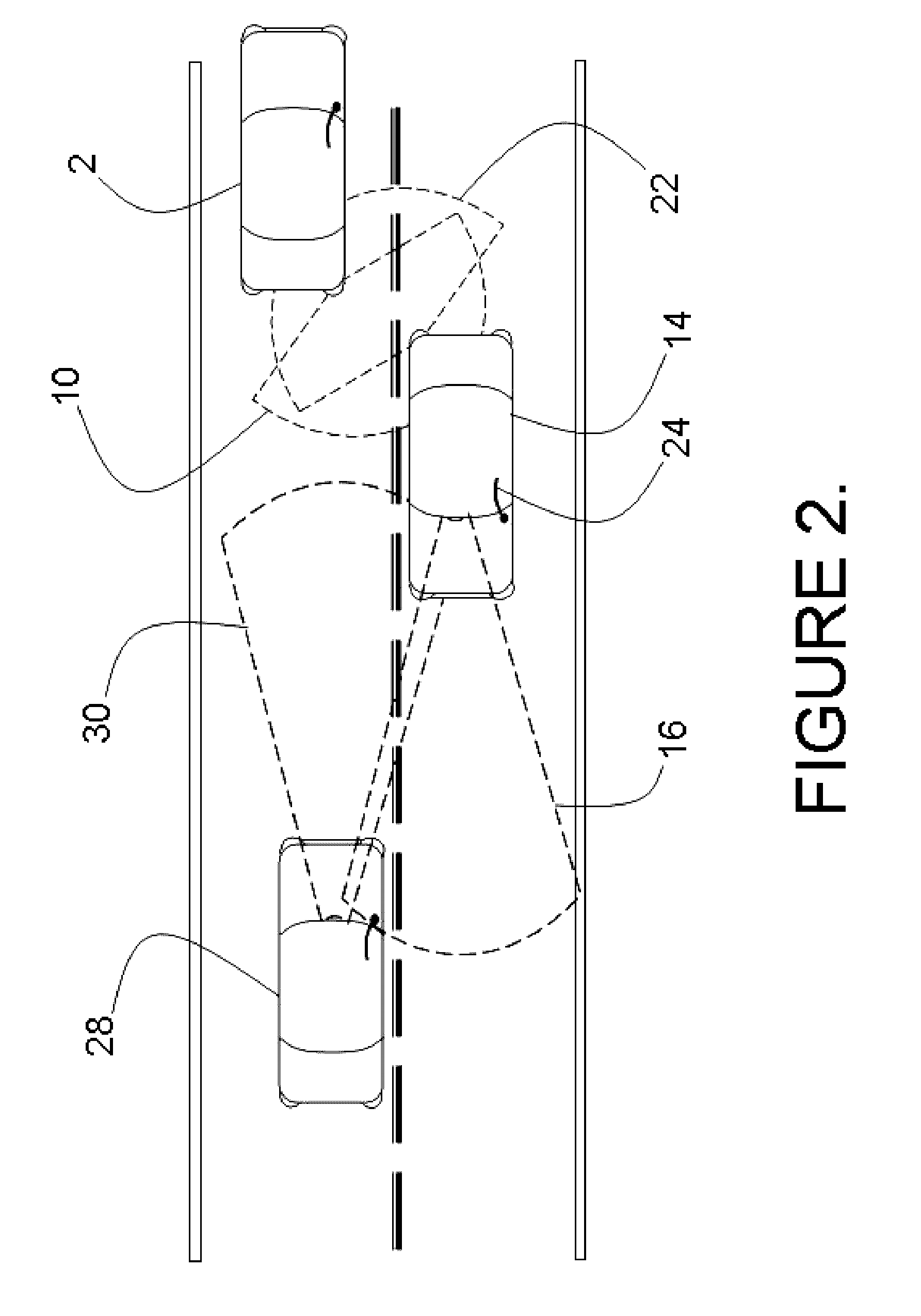LADAR sensor for a dense environment
a dense environment and laser sensor technology, applied in the field of 3d image generation and the identification and tracking of objects, can solve the problems of holographic capture systems, stereo systems, and inability to demonstrate adequate performance in this application, and serious confusion
- Summary
- Abstract
- Description
- Claims
- Application Information
AI Technical Summary
Benefits of technology
Problems solved by technology
Method used
Image
Examples
Embodiment Construction
[0028]This application contains new subject matter related to previous U.S. Pat. Nos. 5,696,577, 6,133,989, 5,629,524, 6,414,746, 6,362,482, D463,383, and U.S. patent application Ser. No. 10 / 066,340 filed on Jan. 31, 2002 and published as US 2002 / 0117340 A1, the disclosures of which are incorporated herein by reference.
[0029]The embodiments disclosed herein enable a system for collision avoidance, object and obstacle recognition and avoidance, and ride and steering control improvements. The benefits are realized through the use of a 3-D imaging facility, comprising a vehicle mounted ladar system with an object detection and recognition capability, a steering, braking, and accelerator control system, and a ride and suspension modification system. The system includes a number of provisions which assure the independent operability of a great number of ladar sensors having overlapping fields of view. These innovations include the assignment of a multiplicity of independent wavelengths t...
PUM
 Login to View More
Login to View More Abstract
Description
Claims
Application Information
 Login to View More
Login to View More - R&D
- Intellectual Property
- Life Sciences
- Materials
- Tech Scout
- Unparalleled Data Quality
- Higher Quality Content
- 60% Fewer Hallucinations
Browse by: Latest US Patents, China's latest patents, Technical Efficacy Thesaurus, Application Domain, Technology Topic, Popular Technical Reports.
© 2025 PatSnap. All rights reserved.Legal|Privacy policy|Modern Slavery Act Transparency Statement|Sitemap|About US| Contact US: help@patsnap.com



